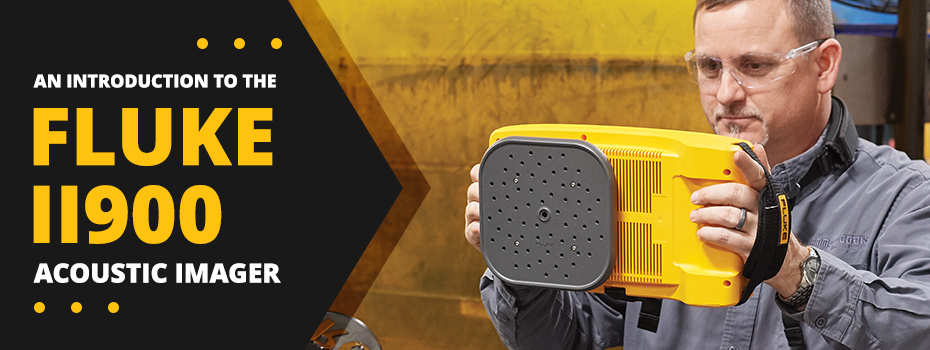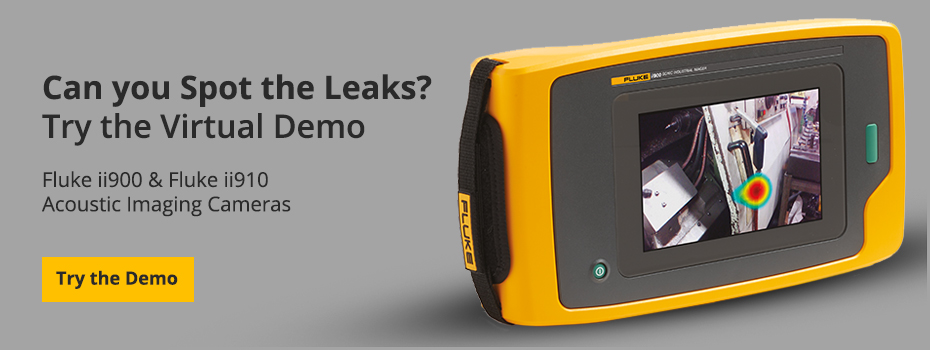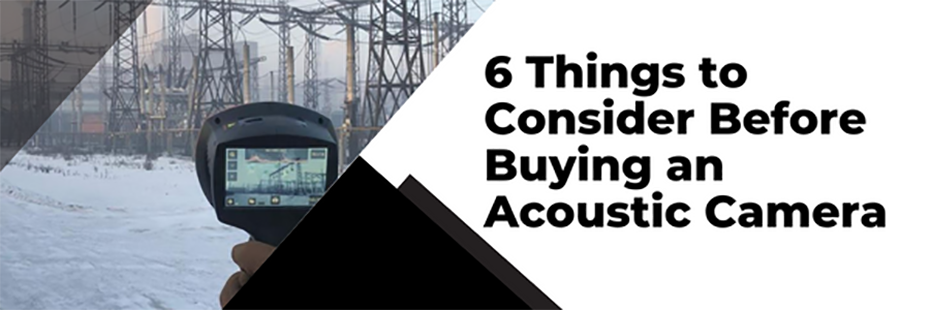 Fluke’s range of ii900 Acoustic Imagers, including the original ii900 and the upgraded ii910, have been specifically designed to ensure they are easy to use. With a simple one-button touchscreen interface, as well as clear acoustic imaging, operating the Fluke ii900 and ii910 Ultrasonic Cameras does not require specialist training. Thereby, allowing you to pinpoint leaks, mechanical failings, or partial discharge quickly. To this end, both models feature quantification modes, LeakQ, PDQ (ii910 only), and MecQ (ii910 only), intended to streamline and simplify analysis and reporting.
Continue reading →
Fluke’s range of ii900 Acoustic Imagers, including the original ii900 and the upgraded ii910, have been specifically designed to ensure they are easy to use. With a simple one-button touchscreen interface, as well as clear acoustic imaging, operating the Fluke ii900 and ii910 Ultrasonic Cameras does not require specialist training. Thereby, allowing you to pinpoint leaks, mechanical failings, or partial discharge quickly. To this end, both models feature quantification modes, LeakQ, PDQ (ii910 only), and MecQ (ii910 only), intended to streamline and simplify analysis and reporting.
Continue reading →ultrasonic imaging
-
Fluke ii900 Acoustic Imagers: LeakQ, PDQ, MecQ Overview
 Fluke’s range of ii900 Acoustic Imagers, including the original ii900 and the upgraded ii910, have been specifically designed to ensure they are easy to use. With a simple one-button touchscreen interface, as well as clear acoustic imaging, operating the Fluke ii900 and ii910 Ultrasonic Cameras does not require specialist training. Thereby, allowing you to pinpoint leaks, mechanical failings, or partial discharge quickly. To this end, both models feature quantification modes, LeakQ, PDQ (ii910 only), and MecQ (ii910 only), intended to streamline and simplify analysis and reporting.
Continue reading →
Fluke’s range of ii900 Acoustic Imagers, including the original ii900 and the upgraded ii910, have been specifically designed to ensure they are easy to use. With a simple one-button touchscreen interface, as well as clear acoustic imaging, operating the Fluke ii900 and ii910 Ultrasonic Cameras does not require specialist training. Thereby, allowing you to pinpoint leaks, mechanical failings, or partial discharge quickly. To this end, both models feature quantification modes, LeakQ, PDQ (ii910 only), and MecQ (ii910 only), intended to streamline and simplify analysis and reporting.
Continue reading → -
Familiarise Yourself with Fluke’s ii900 & ii910 Acoustic Imagers Using Fluke’s Virtual Demo
 All facilities managers working in industrial plants know how time-consuming, money-draining, and frustrating it can be to find compressed air leaks or electrical faults such as partial discharge. Fluke knows this too. That’s why they’ve developed two simple-to-use sonic imagers. The Fluke ii900 and ii910 Acoustic Cameras detect ultrasonic noise and convert it into a sound map that is overlaid onto a digital image. This allows you or any member of your team, regardless of experience, to locate leaks or pinpoint partial discharge precisely. The advantages of the Fluke ii900 & ii910 Acoustic Imagers lie in their ease of operation: specialist training is not required; laborious tracing becomes a thing of the past; and production does not have to be halted. As a result, you maximise efficiency, minimise downtime, and save money.
Continue reading →
All facilities managers working in industrial plants know how time-consuming, money-draining, and frustrating it can be to find compressed air leaks or electrical faults such as partial discharge. Fluke knows this too. That’s why they’ve developed two simple-to-use sonic imagers. The Fluke ii900 and ii910 Acoustic Cameras detect ultrasonic noise and convert it into a sound map that is overlaid onto a digital image. This allows you or any member of your team, regardless of experience, to locate leaks or pinpoint partial discharge precisely. The advantages of the Fluke ii900 & ii910 Acoustic Imagers lie in their ease of operation: specialist training is not required; laborious tracing becomes a thing of the past; and production does not have to be halted. As a result, you maximise efficiency, minimise downtime, and save money.
Continue reading → -
6 Things to Consider Before Buying an Acoustic Camera
 Acoustic imaging cameras, otherwise known as sonic or ultrasonic imagers, are popular amongst facilities managers, especially those working in industrial or high-voltage settings. They are extremely easy to use and highly effective at finding air/pressurised leaks and partial discharge/corona. Acoustic cameras detect audible and/or ultrasonic sound; convert it into a sound map; then superimpose this map onto a digital image of the inspection area, allowing you to pinpoint the source of the leak or electrical fault accurately, simply, and quickly. As sonic imaging is a relatively new preventative maintenance/inspection technology, it can be difficult to know what makes a good acoustic camera. Thankfully, Teledyne FLIR has outlined six things to look for when purchasing an ultrasonic imager.
Continue reading →
Acoustic imaging cameras, otherwise known as sonic or ultrasonic imagers, are popular amongst facilities managers, especially those working in industrial or high-voltage settings. They are extremely easy to use and highly effective at finding air/pressurised leaks and partial discharge/corona. Acoustic cameras detect audible and/or ultrasonic sound; convert it into a sound map; then superimpose this map onto a digital image of the inspection area, allowing you to pinpoint the source of the leak or electrical fault accurately, simply, and quickly. As sonic imaging is a relatively new preventative maintenance/inspection technology, it can be difficult to know what makes a good acoustic camera. Thankfully, Teledyne FLIR has outlined six things to look for when purchasing an ultrasonic imager.
Continue reading →
Page
Previous
Page 1 of 1
Page
Next


